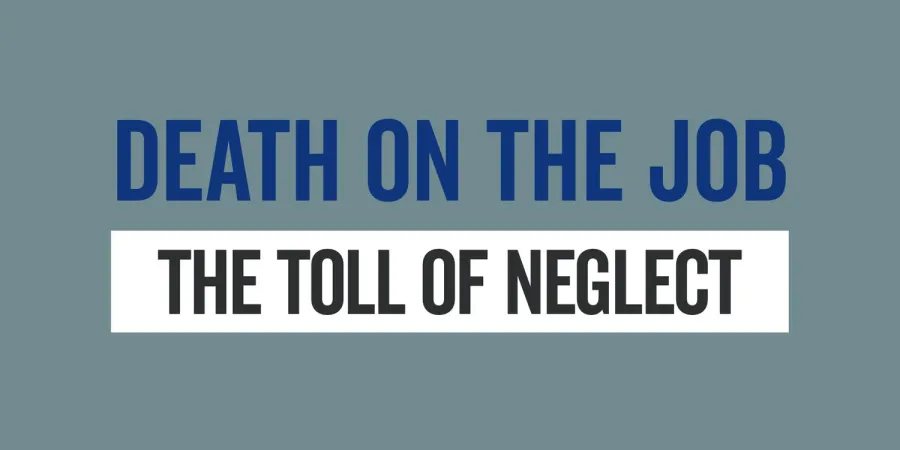Worker health and safety statistics: What we see right now

The AFL-CIO and the U.S. Bureau of Labor Statistics have released their findings regarding workers injury and illness. Take a look at what they found.
We just come to work here. We don’t come to die. Those song lyrics were written by Harry Stamper, a retired longshoreman and union activist from Oregon. He wrote this song in the early 1980s based on his experience at work.
Since Harry wrote those words more than 40 years ago, in the United States alone 236,371 workplace deaths have been reported. That is the equivalent of completely wiping out cities the size of Scottsdale, Ariz., or Norfolk, Va. And that’s only what was reported. It does not include those who died of occupational disease, which is grossly underreported. Estimates of workers who die from occupational disease are around 120,000 per year.
In addition to the deaths, 3.5 million people are injured on the job. These are not minor injuries. They are injuries which require medical treatment and in many cases are life altering. It is also believed that underreporting is significant and the real number is 5.6 to 8.4 million workplace injuries and illnesses each year.
Each year the U.S. Bureau of Labor Statistics publishes the facts about the state of worker health and safety. The recently published report is based on data from 2022. The AFL-CIO takes these numbers and publishes a report titled Death on the Job: The Toll of Neglect.
The bad news:
Worker death, injury and illness is always bad news, but some of it is worse than “bad.”
- The fatality rate is higher than the previous year (2021). The increased rate is 5.7 percent.
- The injury and illness rate increased 7.5 percent over 2021.
- Black and latino workers died on the job at a higher rate than other workers. Black workers’ fatality rate is the highest it has been in at least 20 years.
- Older workers (65-years-old and older) and younger workers (25 and younger) have higher injury and fatality rates.
Some good news:
The Occupational Safety and Health Administration (OSHA) has made the following advances which:
- Allow workers to chose their representatives during OSHA inspections.
- Clarify procedures for collecting injury data from large employers.
- Maximize penalties for high-gravity violations by instituting instance-by-instance citations.
- Strengthen information sharing with the National Labor Relations Board (NLRB) for whistleblower cases.
- Institute targeted enforcement and awareness on specific hazards, such as heat, silica, COVID-19, falls in construction, combustible dust, and injuries in the poultry industry and warehousing industry.
The Mine Safety and Health Administration (MSHA) has strengthened its impact inspections. Impact inspections are monthly inspections by MSHA that focus on mines with higher risk that are identified by poor compliance history.
It is clear that much more needs to be done to better protect workers. The United Steelworkers (USW) remains committed to promoting safety via legislation, regulations, contract language, safety committees and workplace activism. By creating a trained workforce that can recognize hazards and evaluate controls, the USW Tony Mazzocchi Center (TMC) and all of its trainers play a significant role in promoting a safer workplace for all.
***
Image courtesy of AFL-CIO.
Sources
- Centers for Disease Control and Prevention. (2001, April 27). Fatal Occupational Injuries – United States, 1980 - 1997. Morbidity and Mortality Weekly Reports. Retrieved from: https://www.cdc.gov/mmwr/preview/mmwrhtml/mm5016a4.htm
- AFL-CIO (2024, April), Death on the Job: The Toll of Neglect. A National and State-by-State Profile of Worker Safety and Health in the United States. 33rd edition.